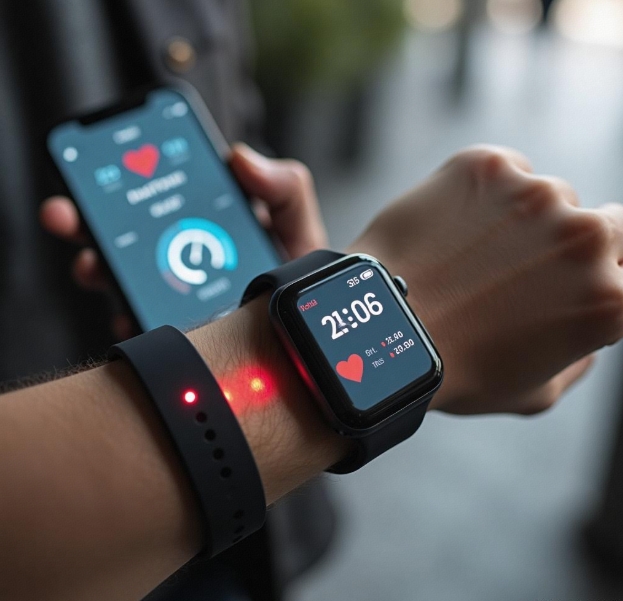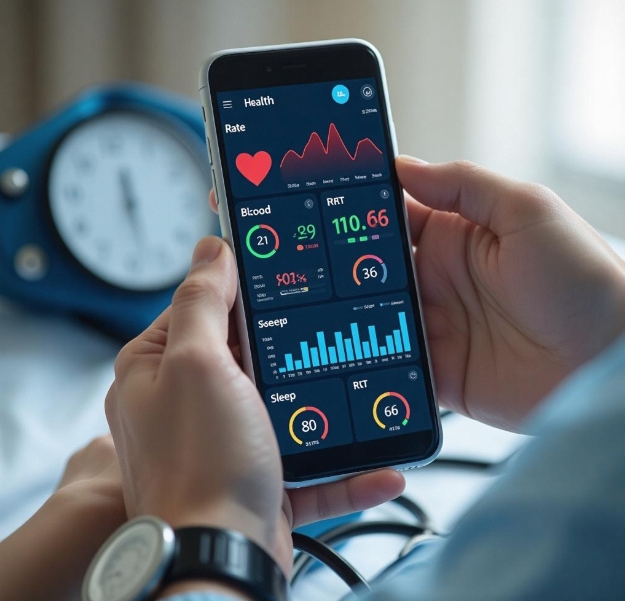Development and Innovation of the Internet of Things in the Healthcare Sector
- latest articles
- 1.DApp Development & Customization: Merging Diverse Market Needs with User Experience 2.Analysis of the Core Technical System in DApp Project Development 3.How to achieve cross-chain interoperability in Web3 projects? 4.How does the tokenization of points reconstruct the e-commerce ecosystem? 5.How to Set and Track Data Metrics for a Points Mall? 6.What is DApp Development? Core Concepts and Technical Analysis 7.Inventory of commonly used Web3 development tools and usage tips 8.Development of a Distribution System Integrated with Social E-commerce 9.Six Key Steps for Businesses to Build a Points Mall System 10.What is DApp Development? A Comprehensive Guide from Concept to Implementation
- Popular Articles
- 1.Future Trends and Technology Predictions for APP Development in 2025 2.Analysis of the DeFi Ecosystem: How Developers Can Participate in Decentralized Finance Innovation 3.From Zero to One: How PI Mall Revolutionizes the Traditional E-commerce Model 4.DAPP Development | Best Practices for Professional Customization and Rapid Launch 5.How to Develop a Successful Douyin Mini Program: Technical Architecture and Best Practices 6.Recommended by the Web3 developer community: the most noteworthy forums and resources 7.From Cloud Computing to Computing Power Leasing: Building a Flexible and Scalable Computing Resource Platform 8.Shared Bike System APP: The Convenient Choice in the Era of Smart Travel 9.How to Create a Successful Dating App: From Needs Analysis to User Experience Design 10.From Design to Development: The Complete Process of Bringing an APP Idea to Life
With the rapid development of information technology, the Internet of Things (IoT) has expanded from areas like smart homes and intelligent transportation to the health and medical field. The innovative applications of IoT not only bring great convenience to people's lives but also spark a profound transformation in the healthcare industry. Through real-time monitoring, data analysis, remote control, and other technological means, IoT makes medical services more personalized and refined, driving the development of the entire healthcare industry.
This article will explore the development and innovation of IoT in the health and medical field, specifically analyzing its applications in medical devices, telemedicine, health monitoring, and aging societies, and further discuss the prospects and challenges IoT brings to the healthcare industry.
The Integration of IoT and Healthcare
1. Overview of IoT Technology
The Internet of Things is a network based on sensors, wireless communication, data processing, and other technologies that enables the interconnection and information sharing between objects and between objects and people. Through the collection and transmission of sensor devices, IoT connects physical objects to the internet, allowing devices to automatically identify, respond, and process intelligently. The core concept of IoT is to connect all physical devices and systems via the internet, enabling them to exchange information and data.
In the healthcare field, the application of IoT technology is mainly reflected in health monitoring, data collection, real-time analysis, and remote control. By collecting health data through smart devices and analyzing it via cloud computing platforms, doctors can understand patients' health status in real time, enabling more accurate diagnoses and personalized treatments.
2. Applications of IoT in Medical Devices
With the development of sensor technology, wireless communication, and data processing, the application of IoT in medical devices is becoming increasingly widespread. Traditional medical devices are often single-function, rely on manual operation, and cannot provide real-time feedback on patients' health information. The introduction of IoT technology makes medical devices more intelligent, capable of collecting patients' health data in real time and transmitting it to medical platforms via the internet, allowing doctors to monitor patients' health status at any time.
Smart Hospital Beds
The application of IoT in bed management is one of the significant innovations in the medical device field. Smart beds can monitor patients' physiological parameters such as heart rate, blood pressure, and body temperature in real time, transmitting the data to the hospital's cloud platform or directly to doctors. By analyzing this data, doctors can promptly understand the patient's health condition and take effective intervention measures. Additionally, smart beds can detect if a patient has fallen or experienced other emergencies through sensors and automatically trigger alarms.
Wearable Health Monitoring Devices
Wearable devices are another highlight of IoT technology in the healthcare field. These devices typically monitor the wearer's physiological data, such as heart rate, blood sugar, body temperature, and step count, in real time through sensors and upload the data to the cloud via Bluetooth or Wi-Fi for analysis. With continuous technological advancements, wearable devices not only play a crucial role in personal health management but can also integrate with medical systems to enable remote monitoring and diagnosis.
3. Telemedicine and Health Monitoring
Telemedicine is a significant application of IoT in the healthcare field. Traditional medical services require patients to visit hospitals or clinics in person, whereas telemedicine enables patients to receive diagnoses and treatment recommendations from doctors at home through internet technology. Using IoT devices, doctors can monitor patients' vital signs and disease progression in real time, enabling remote diagnosis and treatment.
Telemedicine significantly improves the utilization of medical resources, especially for patients in remote areas, reducing the time and economic costs associated with seeking medical care. Additionally, telemedicine provides timely health guidance and treatment for groups such as the elderly and pregnant women, thereby enhancing their quality of life.
Remote Health Monitoring
With the advent of an aging society, health issues among the elderly are becoming increasingly severe. The application of IoT technology in elderly health monitoring provides more convenient and secure health management services. Through wearable devices and home health monitoring equipment, data such as electrocardiograms, blood sugar levels, and blood pressure of the elderly can be uploaded to the cloud in real time, enabling doctors to perform remote diagnoses and interventions based on this data. Furthermore, IoT can integrate with smart home devices to enable functions like fall detection and emergency calls, ensuring the safety of the elderly.
Remote Diagnosis and Treatment
Remote diagnosis and treatment allow patients to communicate with doctors without visiting the hospital in person, through video conferences and online consultations. With the support of IoT devices, patients' health data can be transmitted to doctors' terminal devices in real time, enabling remote consultations based on this data. Especially during the pandemic, the advantages of remote diagnosis and treatment became more evident, as it reduced patient travel and prevented the over-concentration of medical resources.
4. Health Management and Personalized Medicine
The application of IoT in health management has greatly promoted the development of personalized medicine. Through real-time monitoring and analysis of health data, IoT technology can provide tailored health management plans for individuals. With continuous monitoring via smart devices, individuals can understand their health status in real time and make health adjustments based on doctors' recommendations.
Smart Health Management Platforms
By integrating IoT devices with health management platforms, users can view their personal health data in real time through mobile apps, PCs, or smartwatches and interact with medical experts. The platform analyzes users' health data to provide health assessments, exercise recommendations, dietary advice, and more, helping users improve their lifestyle and prevent diseases.
Personalized Medicine
Personalized medicine emphasizes creating exclusive treatment plans based on patients' unique genetic information, lifestyle, and medical history. IoT technology collects patients' health data, exercise data, and environmental data in real time, providing doctors with comprehensive and precise references to develop more personalized treatment plans.
5. Impact and Challenges of IoT in Healthcare
Although IoT technology has made significant progress in the healthcare field, its development still faces several challenges.
Data Privacy and Security Issues
With the continuous accumulation of health data, data privacy and security have become major concerns. Patients' health data often involves personal privacy, and ensuring the security of data during transmission and storage is a significant challenge for IoT applications in healthcare. To address this issue, it is essential to strengthen data encryption technologies, identity authentication mechanisms, and regulatory frameworks to protect patients' privacy and data security.
Technical Standards and Interoperability Issues
Currently, technical standards for IoT devices and platforms are not unified, leading to compatibility issues between devices and systems from different manufacturers. Therefore, establishing unified technical standards and protocols to achieve interoperability between devices is a critical issue that needs to be addressed for IoT applications in healthcare.
Acceptance by Doctors and Patients
Although IoT technology holds great potential, some doctors and patients remain skeptical about its application. Some doctors worry that over-reliance on technology may affect clinical judgment, while some patients distrust the use of smart devices. Therefore, when promoting IoT technology, it is essential to enhance education and training to improve acceptance among doctors and patients.
Conclusion
The application of IoT technology in the healthcare field has achieved significant progress in areas such as medical devices, telemedicine, health monitoring, and personalized medicine. The introduction of IoT not only improves the efficiency of medical services but also reduces medical costs to some extent, promoting the accessibility and personalization of healthcare. However, the application of IoT technology still faces numerous challenges, such as data security and standardization issues. Therefore, as technology continues to develop and improve, the prospects of IoT in healthcare will become even broader, with the potential to bring revolutionary impacts to global health management and medical services in the future.
By strengthening technological research and development, improving industry standards, and raising public awareness, IoT will play an even more important role in the healthcare field, providing people with smarter and more personalized health management services and advancing global health initiatives.
-

How to Use IoT Development to Enhance Supply Chain Efficiency
With the rapid development of the global economy and the deepening of digital tr···
-

Development and Innovation of the Internet of Things in the Healthcare Sector
With the rapid advancement of information technology, the Internet of Things (Io···
-

Data Storage and Analysis Methods in IoT Development
The Internet of Things (IoT) is one of the most revolutionary innovations in tod···

 Blockchain
Blockchain












